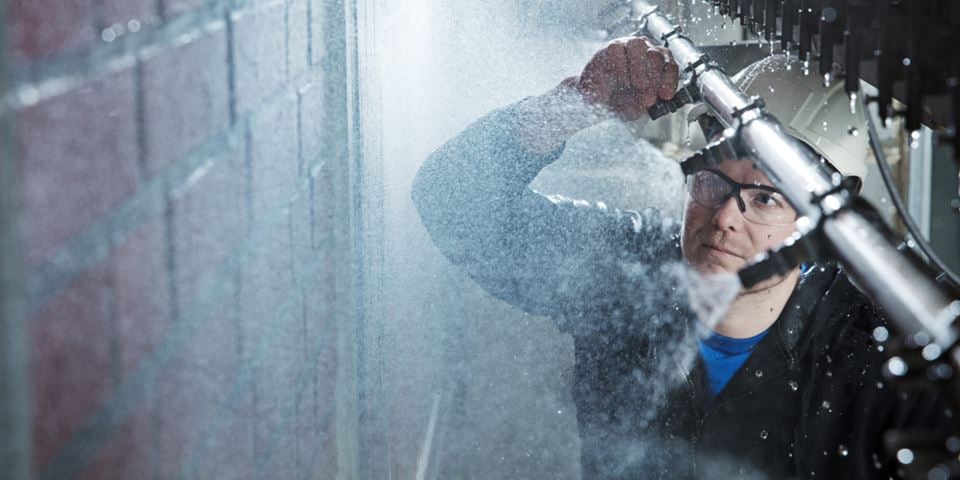Torrential rainstorms are becoming a major problem for our buildings. The combination of wind and rain forces rainwater into small cavities and openings and may result in leaks, causing significant damage to building materials.
“This problem is exacerbated by climate change, which is expected to result in much more rain and wind than we are experiencing today”, says Lars Gullbrekken, who is a Research Manager at SINTEF, Norway. “A more targeted focus on the climate change adaptation of buildings is essential if we are to meet these challenges”, he says.
We need a quality assurance system
SINTEF has for many decades been testing windows as part of the Norwegian annual product control programme, which in turn forms part of the voluntary NDVK compliance scheme for doors and windows.
Key facts:
The air tightness and rainproofing of windows are tested in accordance with the Norwegian standards NS-EN 1026 and NS-EN 1027, respectively. They are subsequently classified according to descriptions given in the standards NS-EN 12207 and NS-EN 12208.
After two decades of testing, researchers at SINTEF and NTNU are now ready to present a summary of their results. Data from a total of 1,130 tests of the air tightness and rainproofing of different window types have led them to conclude that it is rain that causes the biggest problems.
“Rainfall is the most significant cause of building damage in Norway”, says Gullbrekken. “Many studies have highlighted that the frames mounted in building walls represent a weak point”, he says. “But the window sash itself may also be vulnerable to defects and leakages. For this reason, there is a need for a quality assurance system for these products”, he says.

Research Manager Lars Gullbrekken pictured here in front of a testing chamber at SINTEF/NTNU in Trondheim. The chamber gives researchers the opportunity to subject windows to storms and windy weather under controlled conditions. Photo: Kathrine Nitter/SINTEF
1,130 tests
Data from 1,130 tests performed on a variety of windows demonstrate that the corners of a window are vulnerable points. As such this represents the biggest challenge facing manufacturers trying to produce rainproof windows. Defects in joints in frames and sills represent the most common leakage pathways, followed by gaps that allow water to penetrate between the sill and the frame.
The solution to this problem is a thin rubber seal strip that is fitted along the opening edge of the sill and window frame. However, according to Gullbrekken, reducing the gap between the sill and the frame does not appear to improve rainproofing.
The general trend is that the air tightness and rainproofing of windows has improved with time. Some types of window withstand rain and wind better than others. Swivel windows perform best, while the top hung varieties are the worst. Ultra-rainproof windows also exhibit the lowest levels of air penetration and can thus perform very well under harsh weather conditions. In contrast, larger and more complex window designs tend to fail the researchers’ rainfall tests more frequently.
Help from a student
In order to produce the summary of many decades of work, the research team obtained help from former master’s student Therese Gransjøen, who joined the project as a summer job.
“Therese has made a very good job of analysing and structuring these data”, says Professor Tore Kvande at the Department of Civil and Environmental Engineering at NTNU. “We’ve compiled all the knowledge that we’ve gathered over many years, and have learned a great deal from it”, he says.
Now it’s time for commercial actors to carry the work forward.
“The results from our study may offer guidelines for the future development of weatherproof windows”, says Gullbrekken.
This study has been funded by the Research Council of Norway as part of the research projects “Verktøykasse for klimatilpasning av boliger” (Toolbox for the climate change adaptation of homes) and the innovation-driven CRI Climate 2050.
Reference: Rain resistance of windows – Lessons learned from two decades of laboratory testing


